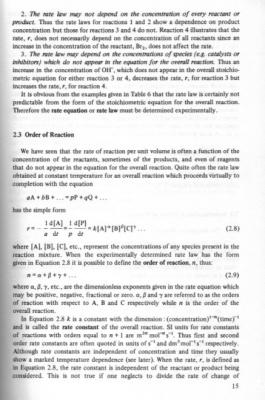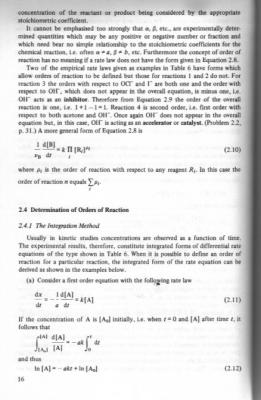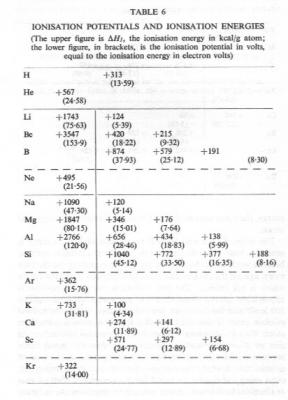-
Posts
18270 -
Joined
-
Last visited
-
Days Won
104
Content Type
Profiles
Forums
Events
Everything posted by studiot
-
I understand that English is not your first language, but I am seriously struggling to understand what you are trying to achieve. Mordred has voiced my concerns If you can upload photos to dropbox, why can you not upload them here to the site? I really need a connection diagram to understand how you are connecting these two boxes and what you are expecting to happen. The first rule of (electrical) servicing is Divide the setup in to sections and find out which section is not working properly. So Mordred's suggestion to try different loads on the stabiliser and report the outcomes is really sound. If your only tools are mechanical hand tools how do you know what voltage the stabiliser is giving?
-
I am trying very hard to help, but your linked page about the inverter leads to a virus infected webpage, infected with the Google Survey Scam. You really need to explain properly what your issue is and why you have apparantly connected the outputs of two electrical devices together in opposition.
-
Don't forge that ionisation energy and ionisation potential is defined to the removal of one electron from the free atom in a gaseous state. I costs quite a lot of energy to get that atom from its normal state, combined with chlorine in a lattice to this state. The lattice energy of NaCl is 782.1 kJ/m The heat of hydration is -777.8 kJ/m The pidgin scientific English will not win friends and influence people, nor make them think you are serious. If you are serious we can discuss apparatus commensurate with the definition of ionisation potential that will register the 5.14 volts on a (suitable) voltmeter in producing sodium ions and electrons.
-
I hope you noticed he makes very clear that all the exponents should be determined experimentally. I meant to say this before.
-
Here is an extract from a university level text that has many examples to look at. Chemical Kinetics and Reaction Mechanisms by Wilkinson.
-
Forgive me but I thought a projector projected not reflected, hence its name?
-
Aren't (nearly) all armed police units quasi military? As a matter of note I had much more confidence and a better relationship with the proper army patrolling Heathrow when I worked there in the 1970s, than I do in the schoolboys with tommyguns, now patrolling Lulsgate.
-
I don't have any idea where you 1.5 volts comes from, and your tone is not receptive towards help. Anyway here is a table of first ionisation potentials in volts. You will note that the first ionisation potential for sodium is 5.14 volts.
-
14 on one day wasn't a bad tally by the Royal Irish Constabulary, and makes the claim of 70 total since 1920 even more amazing.
-
So was I suprised since Ireland was still part of the UK in 1920, so should include figures like these.
-
Does this figure include Northern Ireland, or has the province left the UK while I was away and not looking ? Another figure that challenges your idyllic view is the rate of deaths in police vehicle 'accidents' This is rated at about 5 per year http://www.dailymail.co.uk/news/article-1342723/Met-police-traffic-accidents-day-Six-people-killed-years.html Perhaps not the best link, but there are plenty available.
-
This is the correct term when considering these types of effects. You will know you fully understand it when you can explain to someone how a (light) projector can show black on a white screen.
-
Don't know what they do these days, but the OU uswed to have a good third elvel course on complex analysis, that was way beyond QM requirements. I would have thought you would only need basic complex number theory, rather than the full works concert of the theory of the complex variable. QM involves the complex solution of partial differential equations (There also used to be a good OU third level course on these which would be very useful). Other required maths will no doubt be explained in the course, some is quite specialised such as the Bra and Ket notation. EM does indeed involve much vector mechanics, in terms of calculus and geometry. A good summer read would be the superb intro book by Matthews called - you guessed it - Vector Calculus (Springer Verlag undergraduate books). Another good summer read here is Electromagnetism for Electronics Engineers by Carter (Chapman and Hall).
-

Electrical questions; wire gauges and winding sizes.
studiot replied to Knuckleballerr's topic in Classical Physics
Good Morning, knuckleballerr, and welcome. Just a note, we have an engineering section and a number of very good engineers as contributing members. Electrical wiring? Yes the decision to use stranded or solid wire is basically a mechancal one. This decision extends far beyond automotive applications and is more important than just 'advantages' of one over the other. What happens if you repeatedly bend a length of solid core wire back and fore? It breaks readily. Stranded wire is much more resiliant to repeated flexing. Solid core wire is cheaper. So in situations where the wire is subject to vibration such as in an automobile or a washing machine you should use stranded wire. In some situations such as the windings on a motor or generator the wire is supported along its whole length so vibration is not an issue. In this case so the cheaper solid core can be used. However you have to make the winding in the first place so sufficient flexibility for this is obtained by using thinner wire. Note there are other constraints with motor windings. In a building situation there is little vibration so again solid core wire takes the vote on cheapness for fixed wiring, but stranded is used for the added flexibility of connecting wire to both fixed and portable equipment. It should be noted that proper connection techniques differ for solid and stranded wire, so care should be taken fitting one to a connection designed for the other. Engineering is always a balance between conflicting requirements and cost is often one of these. Your auto alternator is one of these. The cheaper ones have lower spec because those that are cheaper (and easier) to make have fewer poles and lighter bearings than the heavier duty ones.- 1 reply
-
1
-

A misunderstanding about multiplication
studiot replied to Deepak Kapur's topic in Classical Physics
I've not come across that one before. +1 -
You need some EM theory to study quantum mechanics, but nowhere near third level stuff. In fact you need a similar level of basic EM viz A level to first year university to study to study either QM or EM at third level. You do not need any QM to study electromagnetics. Good luck with the OU, it is a tough route on your own.
-

A misunderstanding about multiplication
studiot replied to Deepak Kapur's topic in Classical Physics
Surely an 'Albert' would be more appropriate? -

A misunderstanding about multiplication
studiot replied to Deepak Kapur's topic in Classical Physics
Actually since c is a constant c2 is also a constant with dimensions L2T-2 -
Yes I would agree that you need a three stage circuit, call them stages 1, 2 and 3, since you have to provide defined input and output filter characteristics with the rolloffs. So stage 1 for the input filter, stage 2 for the required gain, stage 3 for the output filter. The turnover points are very low in frequency and within the reach of any conceivable BJT ft so that will not be a problem and a beta of 100is pretty usual. I can't see a voltage gain (that was A?) presenting any problems either with a single BJT in stage 2. So what are your next thoughts? Edit my next thought is that you haven't stated the input voltage level. with an output requirement of Vo = 75Vin this will constrain your configuration possibilities and power supply requirements. In the light of this it may be sense to combine stages 2 and 3, perhaps as a coupled bjt pair.
-

A question about proportionality and equality
studiot replied to Deepak Kapur's topic in Classical Physics
+1 -
Interesting distinction, Timo. +1
-
It's a fair question about space between, if you are going with the little balls or photons model. The best way to answer this is to think of a gas. The molecules in the gas are buzzing about, but there is lots of empty space around them. The greater the number of molcules in a givne space the less the free space of course, but there really is normally much more free space than molecule, even in a gas plasma. Now there is one big difference between gas molecules and photons. Gas molecules have a range of speeds and we discuss the average speed, and the spread. Photons all travel at the same speed. But we can still talk of phton density, just as gas density. So no, continuity is not an issue with this model.
-
Lock Lock, who's there?
-
What makes you think it is broken? Many such pieces of equiment wil only turn on under load. Have you tried it on load? This could be very dangerous if you lack experience.
-
Is that all? I thought over 90% of folks in the US were immigrants at one time. Einstein and Emmy Noether being examples of your best catches.




